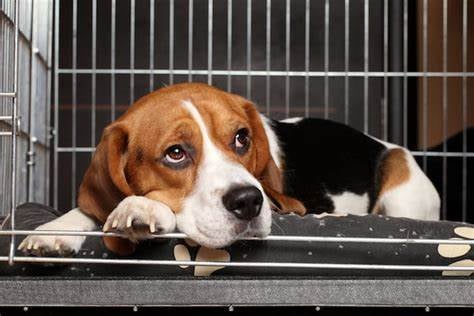As schools return for the autumn term and the summer holidays are behind us, some owners underestimate the impact this transition can have on their pets, particularly dogs, who have been used to lots of companionship for the past six weeks and who now face extended periods on their own.
Separation anxiety could lead to unwanted behaviours such as excessive barking or chewing furniture, but over time most dogs will learn that it’s okay to be left for a few hours (ideally no more than four or five).
Dealing with separation anxiety takes time and patience, and maybe investment in a dog-walking service during the day, and there are no quick fixes. The solution is most definitely not a crate, but some owners see crates as a way of controlling a dog’s behaviours.
When you research ‘how long should a dog be kept in a crate’ there are some alarming results, with some so-called experts saying that up to eight hours is perfectly acceptable. Little surprise, then, that some owners think that they can lock up their dogs while they go to work.
Crates undoubtedly have their uses, and they can be used to provide a safe haven where a dog can feel secure - but with the door left open. They can also be used as a training aid to help puppies learn to be left alone or to toilet train, and they can also ensure dogs are secure in the back of a car.
The crate must be a suitable size and as a minimum a dog should be able to sit and stand at full height, turn around, stretch out and lie down in a natural position. Remember if you are buying a crate for a puppy think about the size of crate they will need when they are fully grown.
Introducing a puppy (or a dog) to a crate must be a slow and gradual process.
The crate should contain comfortable bedding and an interesting toy or two, and more nervous animals may prefer that part of it is covered in a blanket.
It should be placed in an area of the house where the family spends most time, and the door of the crate should be fixed open so that it can’t close accidentally.
The puppy or dog should be encouraged to explore the crate on their own terms. Start by placing treats inside it, but don’t force them to go in – just give lots of encouragement. It may take several days before they are happy to go in and out of the crate. Then start to feed them by the door of the crate, and then move the bowl further and further inside it.
The first time you close the crate door while they are eating, open it as soon as they are finished.
With each successive feeding, leave the door closed a few minutes longer, until they are staying in the crate for ten minutes or so after eating. Once the puppy gains confidence about staying in their crate with the door shut you can start to gradually leave them on their own. It’s a good idea to practice doing this at different times of the day so that the puppy gets use to being left at a variety of times.
A puppy should not be left alone for long (an hour or two at most), and they should have been able to go to the toilet beforehand.
Ideally a crate should be a safe haven that a puppy or dog can chose to enter voluntarily - somewhere they can go to for peace, quiet and security. And if this is the primary purpose of a crate, is there any real reason why the crate door should be closed on an adult dog? A crate should be a training aide and not a form of imprisonment.





Comments
This article has no comments yet. Be the first to leave a comment.